Remembering the Art Colony Gang at Canada Lake
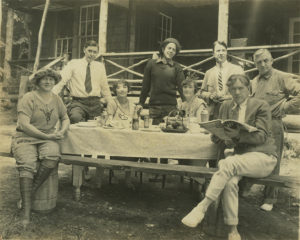
By John Widdemer
(this article was originally published in the Echo in 1996 (pp. 20-24))
The “Art Colony” at Canada Lake was not a formal colony of writers and artists like those of Chatauqua, Breadloaf or Peterborough, NH, but really a collection of friends and acquaintances from the New York City area who knew each other professionally and, through word of mouth or summer visits, came to love the lake.
It existed from early this century until well after the second world war. A main reason that Canada Lake was chosen had to do with finances, which were slim at the time for those concerned, and accessibility relative to the Northern Adirondacks or Maine. My parents first arrived in 1921 from New York, having put their car on the “Hudson River Nightboat” to Albany a driving from there. The fully loaded car had to be backed up Mary Jane Peck hill from Gloversville because reverse was the only gear powerful enough to make it. Roads were dirt, Point Breeze road and Barbour road didn’t exist, so the last part of the trip was on foot to our camp on the north shore. There was no electricity, so light came from kerosene lanterns and ice was cut from the lake in winter and stored packed with sawdust, to last the summer, in ice houses.
I don’t know how “Dwig”, the colony pioneer, first found the lake, but I do remember, as a child, most of its members.
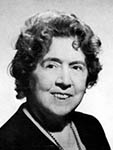
There was one of a series of poems written by my aunt, Margaret Widdemer,about Canada Lake shortly after she shared the first Pulitzer Prize for Poetry with Carl Sandburg in 1919. She and several other New York based writers, and artists had made Canada Lake their summer home when this was written in 1921.
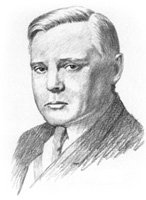
One of the most memorable writers, to me, was Herbert Asbury. His camp was, at that time, the last one on Dolgeville Point towards Lily Lake. He was a great friend of my parents. At our camp, one of his books, a biography of Carrie Nation, bears the following inscriptions on the fly leaf:
“To Mabel and Kenneth Widdemer,
Susie, Rex, Sea Sled, Johnson
Ten –they all start on the
First pull, or the 5th cocktail.
How ridiculous.
Herbert Asbury
(The bottle man)
August 26, 1932
(Swell party, lousy pen)
Susie was their cat, Rex was their dog and a big ink blot next to his signature caused more, I suspect, by the 5th cocktail than by the “lousy pen”. Herbert was a tremendous “character”. He had been a tough newspaperman, working his way east from Farmington, MO where he was born in 1891, to New York where he was a reporter for the Tribune, Sun, Herald Tribune and finally an editor at Collier’s magazine. Meanwhile, he published numerous successful biographies and histories the best known of which “The Gangs of New York”, was recently reprinted. Herbert looked quite a bit like Ernest Hemingway, and like Hemingway, had been severely wounded in the first World War. I heard the story several times of how he was simultaneously gassed and buried under a collapsing church near Baccarat, France. The next day, minus one lung and with many broken bones he was dug out and his hair had turned completely white overnight. Herbert was a great patron of aspiring businessmen. When Jim Hays and I were about 12 years old, he “created” several jobs for us to do at his camp. The most exciting was picking up 50 pound ice blocks weekly at the store and delivering them by boat (for those famous cocktail parties, I guess). By the time our 3 horsepower Elgin pushed the heavy “tin” rowboat to Dolgeville Point in the August sun, the ice block was often reduced to an ice cube. Herbert never complained. The other jobs were a weekly underwater cleaning off of algae from his beautiful Faye and Bowen inboard and trimming grass from around the numerous stepping stones in his lawn. Looking back, it seems like WPA work. The worst job was picking up his mail at the post office which in those days was run with an iron hand by “Gene”. Gene looked like Mark Twain and had fierce eyebrows and a bushy mustache. He always wore farmer’s overalls and a striped shirt like a railroad engineer. We were told he had been a circus ringmaster. Every day we would timidly approach his barred window and he often bellowed (long before we reached it) “NO MAIL FO RASPERRY!” Woe to him who loitered too long near the post boxes or fumbled too long with the lock combination. A “diamond in the rough” Herbert had a gentler side. He baked wonderful pies and never drove a car.
The most exotic couple in the art colony were the Sarkas. They were also frequent visitors to our camp. Even in the 1940’s Charlie drove an ancient rig (probably the first steel boat made and without flotation chambers) with a “knucklebuster” outboard, the original Evinrude, started by a wooden knob on the flywheel. One foggy night, they approached our dock at top speed (about 5 mph) and didn’t see the big rock that usually lurked two or three feet under water but was just awash because the dam had drawn down the lake for power that summer. His wife, Grace, was the bow holding aloft a kerosene lantern. I remember the bow and lantern rising high in the air as it slid up on the rock and then sinking slowly backward as the stern went under and the whole boat disappeared majestically beneath the waves. Charlie and Grace were brought in and wrapped in blankets in front of the fire and given the obligatory “cocktail”. As a 10 year old, I was mesmerized by the scene and the story that emerged. As background, Charlie was a very successful illustrator of books, magazines and advertisements and had come early to Canada Lake (brought, I think, by “Dwig”). He had built a modest cottage on his large lot, now owned by the Kulleseids. But he had had a run of good fortune and his dream was to build the “biggest camp and fireplace on Canada Lake”. The money ran out with the fourth tier of logs (which were still in place when I was a child but the majestic fireplace still stands, truly the grandest one on the lake! We always knew that Grace has an unusual affection for their Canada Lake land and that night found out why. Charlie worked in oils and watercolors as well as being an “illustrator”. He had, as a young man, visited Tahiti (not long after his illustrious predecessor, Gauguin) and on the trip back from the South Seas, the captain of their ship was taken sick and died. Grace, having been a trained nurse, had cared for him and received, in his dying moments, a treasure map of Mona Island (in the Caribbean, off of Puerto Rico). Expeditions were mounted (including one by the National Geographic Society) with nothing found. But Grace, who after Charlie died, would never part with the property, told us that night that the treasure did exist, buried somewhere on their 15 acres at Canada Lake… The real treasure was Charlie’s work which now is in the collections of the Metropolitan Museum and the Whitney in New York and the Chicago Art Institute, as well as some lucky Canada Lakers.
There were links in New York which drew these people together. One was the magazine Colliers where Asbury was an editor and Sarka was an illustrator. Illustration was the common thread which bound all the Canada Lake artists. Before TV, cartoons in the newspapers were a major form of commentary and entertainment. Dwig was a cartoonist and Paul Bransom began as a cartoonist but soon switched to specializing in animal illustrations and became known as the “Dean of Animal Artists”. His work graced numerous magazine covers and over 40 books including “The Wind in the Willows’, Kipling’s “Jungle Book” and “Just So Stories” and countless magazine stories. His studio at Canada Lake, where he was our neighbor, contained many animal skeletons and stuffed animals which he used to study the structural details of their anatomy (fascinating to a boy next door). Paul was extremely handsome, with black hair and piercing brown eyes. He was a great naturalist and lover of animals and birds. Behind his camp, on Mud Lake, lived my Aunt Margaret whose cat had the unfortunate habit of laying caught birds on Paul’s doorstep. A vivid childhood memory is of Paul chasing the cat down Margaret’s trail wielding a broom and, moments later, Margaret chasing Paul up the trail wielding the same broom. They made up, of course, and Paul presented her with a magnificent painting of a rampant tiger with the inscription: “To Margaret, to scare away the mice.” Not to be outdone, she returned it the next day with a further inscription:
“This gorgeous feline,
from the brush of Paul Bransom
Like his maker fine,
And both clever and handsome.
But he cannot “meow”,
Or jump down and say “scat”.
So the mice stayed ‘till now,
When I got a small cat!”
The painting now hangs in my living room.
Paul was part of a group of friends at the lake which included Jim Stanley. Jim’s camp was later Mabel Kane’s and burned. It was built right on the edge of the lake, high up on the rocks. Jim was a leading radio singer of the 1920’s and 1930’s until, tragically, he lost his voice to throat cancer at the peak of his career. I have my parent’s home movies of parties on his dock, with everyone dressed in Indian costumes, doing a war dance which culminated in jumping, one after the other, into the lake. The costumes, I think, were a throwback to the early (professional) movie making at the lake, which is another story. There was a “wild” side to the colony and probably prohibition and the slightly bohemian lure of forbidden alcohol had much to do with it. My parents made beer (as a child, I was rewarded for household chores with shiny, flat, unused bottle caps from earlier days which I could cash in at the end of the summer for money). And there was a story that the top of the big tree on the island had been knocked off by
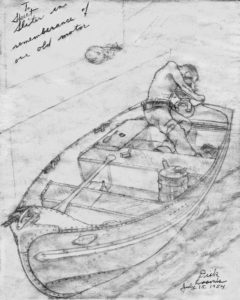
Skeet Sliter returning from one of his bootlegging flights from Canada (no doubt to supply his friends with their week’s “cocktail”), although this is unconfirmed. A close friend of Jim Stanley’s was the writer and humorist James Thurber (famous for his dogs in the New Yorker). Thurber was nearly blind and one night, during one of the particularly lively dock parties, he was suddenly absent. After searching everywhere, Stanley finally called out into the night, “James- where are you?” A distant voice came back, “Down here, with the fishes.” He had fallen off the high dock and broken an arm, but he always loved Canada Lake nonetheless. Other frequent guests at the Stanley’s were their niece, Margaret Stark and her companion, Frank Banta. Frank played the piano on the famous radio program “The Bell Telephone Hour” and Margaret was the daughter of John Stark, who published all of Scott Joplin’s music (The Entertainer, etc.). He was a pioneer in that no black composer ever had a royalty contract before. Joplin had tried to sell his music to Stark for a few dollars outright, but Stark insisted he take royalties which eventually made him a wealthy man. Jim Stanley’s wife, also Margaret, was a well known opera singer. So the “art colony” had its musical side, too.
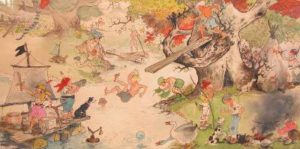
The Godfather of the colony was “Dwig”. Clare Victor Dwiggins was a very successful cartoonist in the days when cartoons were a major form of entertainment and communication. His characters were “Tom Sawyerish” and the content was both humorous and philosophical. Dwig was the first artist at Canada Lake and directly or indirectly brought all the others. He was small and sprightly with a shock of white hair, as I remember him. During the day, Dwig was always shuttered in his small cabin studio working against a “deadline”. For visiting children, this meant NO noise anywhere nearby. But, outside of working hours, it was a different story. Dwig started every day with a “war whoop”, leaping naked off his dock regardless of the water temperature or weather. Often this was echoed with a more genteel whoop from Eberly Hutchinson, nakedly jumping off his dock, far across the lake. Eberly was the ultimate scholar, amateur poet, world traveller and state senator who was a close friend to most of the colony group. His camp was at the end of “Hutchinson Road”. Dwig was quite Bohemian, but he drew the line somewhere, as my aunt found out. She was writing the libretto for an opera in collaboration with a Louis Berreli who spent a week at the lake and brought along his male companion. They would sun themselves, in Bikinis (the first, I ‘m sure, at Canada Lake, this being 1944), at the end of our dock. The open gay life was not yet accepted, at least not at Canada Lake, so Dwig, spurred on I think by Jim Stanley, began calling Louis “UmBerreli” and generally poking fun at him. My aunt was furious and the next day was determined to settle matters with Dwig. I was enlisted to ferry her across the lake in the old “Sea Sled” to the new spot on the South Shore were Dwig was beginning to build a new camp. At that point, he had erected a temporary structure for shelter made up of dozens of old doors from the salvage yard. Wide eyed, I waited in the Sea Sled while my aunt (who by now you might have gathered was a somewhat imposing figure) disappeared into the house of doors. I never did know what went on inside, but she emerged, apparently triumphant, and with a final gesture slammed the only door that opened and closed and was connected. Like a house of cards, one after another, the walls of doors, like those of Jericho, collapsed. My last view of Dwig (as I frantically tried to start the old Johnson) was him standing exposed, and I imagined, chagrined, among the devastation. Although there were often rows and feuds among the Canada Lake artists, they were always resolved, as was finally the case between my aunt and Dwig. Phoebe, Dwig’s daughter, married Tod Ballard who was probably the most popular writer of the lake group and his western novels sold by the hundreds of thousands in hard cover and paperback.
I think the art colony at Canada Lake inspired many other lake residents to paint and write. My mother, Mabel Widdemer, published many novels, a series of juvenile biographies of “Famous Americans” which are still used in school and much poetry. Bill Lacek, on West Lake who was Skeet Sliter’s competition (as a Johnson motor dealer) painted wonderful lake scenes, most notably the unbelievable West Lake sunsets (of which I have several). Milburn Smith Jr. has written several successful plays. Barbara McMartin has published widely (including, of course, her famous Adirondack guide series) and is an accomplished painter. Helen Hays published both poetry and memoirs based on her growing up at the lake and in Johnstown and is an accomplished painter. Wally Crispin, who was tutored by Paul Bransom, is a wonderful painter and I could go on….
Another poem, written by my aunt while at the lake, sums up for me the romantic spirit of the Art Colony “gang” at Canada Lake:
PRIZE
I swam a sparkling mile
Through the glassy lake
Where I saw a lily shine
Just not, at daybreak
But when I reached the leaves
For the thing of white
It was only a feather dropped
In a wild duck’s flight;
I have no broken flower
Captured and dying—
But I have a dream of a bird
Flying – flying!
